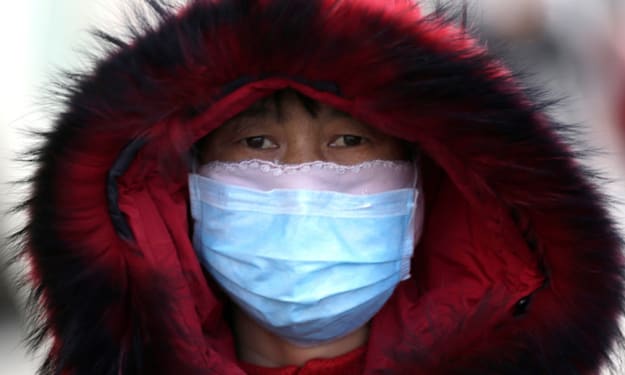How a Cough Can Spread Coronavirus In Supermarkets
An important question in the debated as scientists race to study the coronavirus. Can it spread through the air?

Researchers agree the coronavirus spreads through droplets, particles larger than 5 micrometres, when an infected person coughs, sneezes or talks.
The droplets fly through the air before settling on someone else. But scientists are still not sure to what degree a cloud of tiny viral particles — known as aerosols (which are smaller than droplets) — can stay in the air and infect the next individual who walks in the same room. That is known as airborne transmission, and the measles virus is believed to spread like that. It resides in an area where an infected person has coughed or sneezed for up to two hours.
According to the World Health Organization, that's not the case for the coronavirus.
Several recent studies have detected live particles of coronavirus in the air. The Centers for Disease Control and Prevention says hospital procedures, like intubating a patient, "could create infectious aerosols."
Droplets versus Aerosols
The main difference between droplets and aerosols is that the former are large and heavy, so they can't stay into the air for long. The latter, called droplet nuclei by WHO, is smaller than 5 micrometres.
Researchers call to put the semantics aside to avoid confusions.
Some research shows the coronavirus can travel further than 6 feet. That is the distance cited by the CDC as enough social distancing.
A study published in the Journal of the American Medical Association on March 26 confirms it. The study says a cloud of virus created by someone who coughs or sneezes could reach far beyond 6 feet. "The gas cloud and its pathogen-bearing droplet payload of all sizes will fly between 23 and 27 feet."
In a recent interview Trevor Noah asked Dr Anthony Fauci — Director of the National Center for Allergy and Infectious Diseases — if the coronavirus endures in the air.
"If you step in after someone else to an elevator, will there still be coronavirus?" Noah said.
Fauci said that those infected by sneezing and coughing could spread the virus through droplets and aerosols.
An aerosolised virus form "means it doesn't drop right away; it hangs around for a bit," Fauci said. "So you could come into a room assuming everything's all right, but then you inhale it."
The aerosol transmission, he added, is likely not the prime way the coronavirus spread. He also repeated that social distancing of 6 feet was enough to protect yourself.
Researchers in Finland publish a chilling 3D simulation
They show how droplets from a single cough in a supermarket can stay in the air for "several minutes". And fly through two aisles — possibly infecting nearby customers with the coronavirus.
Aalto University, the Finnish Meteorological Institute, VTT Technical Research Centre of Finland and The University of Helsinki studied it. They observed how aerosolised particles flow through the air from the respiratory tract as people cough, sneeze — or speak.
According to preliminary conclusions, tiny particles carrying the virus can stay in the air longer than was initially thought. Confirming the importance of avoiding packed indoor spaces.
The four organisations each carried the modelling, applying same starting conditions, of a person coughing in an aisle between shelves according to Aalto University.
"Someone infected, could cough and walk away, leaving behind microscopic aerosol particles carrying the coronavirus," Aalto University Assistant Professor Ville Vuorinen indicated.
"These particles could end up in the respiratory tract of people in the vicinity," he added.
Aerosol transmission in hospitals
Since healthcare workers are exposed to higher concentrations of the virus, they are at greater risk of contracting it from droplets and aerosols.
When patients need ventilators, doctors insert a tube into their respiratory tract. This process creates infectious aerosols.
One study, not yet peer-reviewed, analysed two Chinese hospitals. They found low levels of virus in the air in patients' rooms. Higher virus airborne concentrations were in medics staff-rooms.
Those areas where doctors removed protective equipment. The authors wrote that virus-laden aerosols probably dropped on protective gear like gowns and masks while the doctors worked. Then transferred back into the air when the staff moved the items as they took them off.
About the Creator
Anton Black
I write about politics, society and the city where I live: London in the UK.






Comments
There are no comments for this story
Be the first to respond and start the conversation.